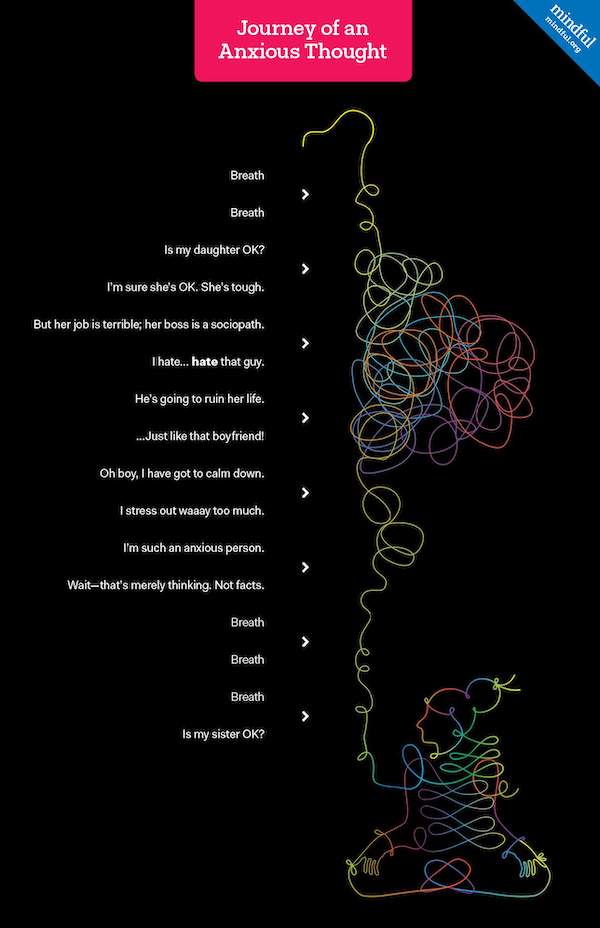We all have occasions where a simple “what if” question can lead to a complicated story line of fear, anxiety and chaotic thoughts. These anxiety-producing thoughts can quickly run amok and generate strong stress responses in the body.
Our thoughts can quickly run down a tangled path (see the graphic) and tie our emotions and our stress responses in knots. As our invented story line expands, our endocrine systems continue to generate stress hormones (flight, freeze or fight), accelerating the fear. We know we are uncomfortable and worried, and usually label those feelings as “bad,” looking for ways to make them stop. Trying to make yourself stop feeling what you feel increases anxiety and sharpens the focus on what you do not want. And as you know, what you focus on grows.
The Limits of Positive Redirection
Our society often suggests that we redirect these uncomfortable thoughts, “flipping” into noticing beauty, gratitude, or appreciation. This can sometimes be a challenge, especially if our thoughts or emotions are especially strong (tangled).
Mindfulness practice suggests that rather than denying, dwelling upon, redirecting or worrying about our story lines, we simply notice them. Acknowledge they exist, and direct your attention to a neutral focus point – usually your breath. Deep, slow, conscious breathing is an effective tool to short-circuit the body’s stress responses.
From Mindfulness to Meditation
Your body calms, and your mind clears. This enables you to view the entire truth of the situation, and what appropriate actions – if any – may be useful. Meditation gives us another method to reduce reaction, quiet the story line, and calm the body. When we have been able to untangle our thoughts with mindfulness, we can more successfully allow the peace of meditation to heal us. If your thoughts often spiral and feel hard to manage, anxiety treatment can help you find tools for peace and clarity.

